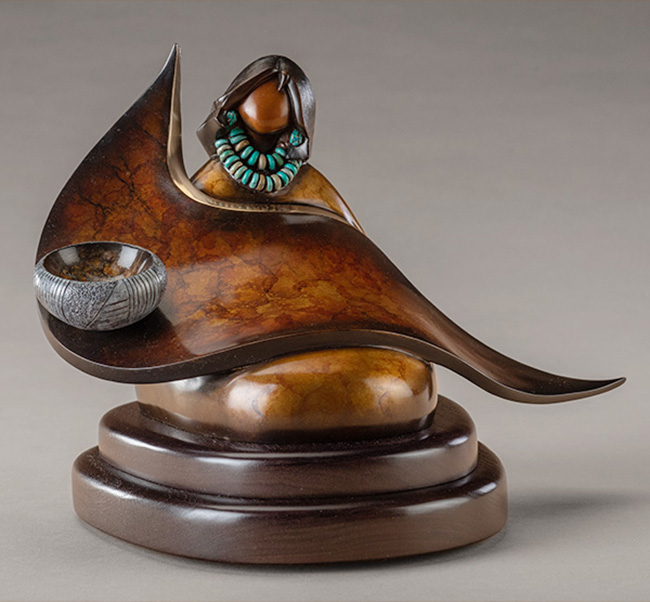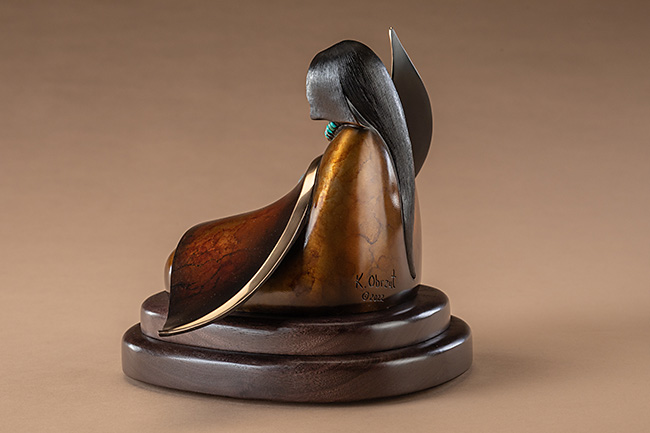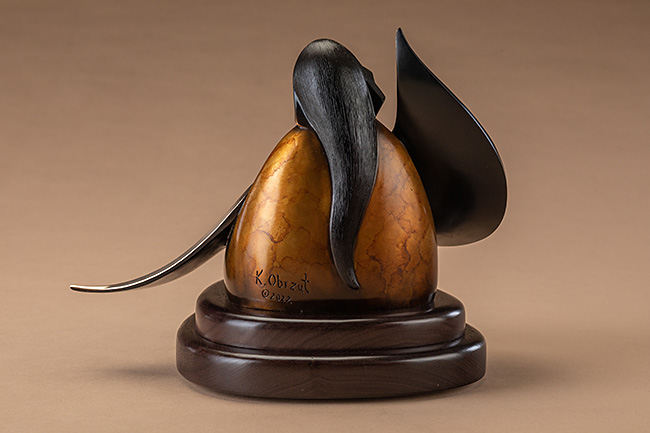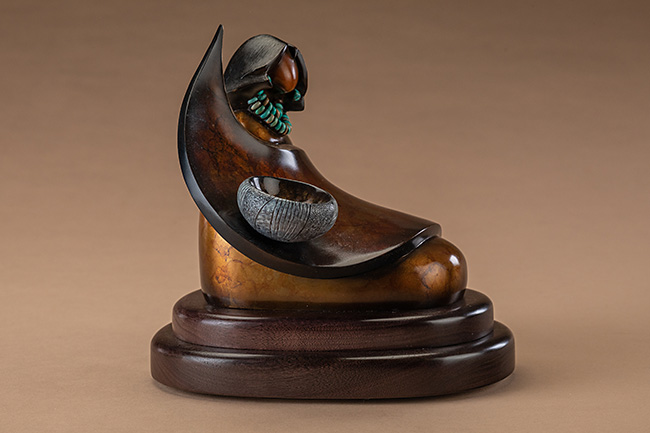Lines of Time
10"H x 13"W x 12"D
She is kneeling to symbolize preparation for womanhood or for marriage.
The flowing shape represents the Manta, the over the shoulder dress worn by the Hopi Women.
The People of Long Ago, Hisatsinom, began developing pottery two thousand years ago, leaving traces of our migrations in the four corner regions of Arizona, Utah, Colorado, and New Mexico. The color and characteristic of the earthenware clay varied from region to region and was a woman’s task, passed from mother to daughter.
Utilitarian and storage vessels remained unadorned while ceremonial pottery were eloquently decorated with plant or mineral paint using a brush made from yucca. Vibrant linear hatch work in early pottery dominated often representing abstract themes of rain. Rain equates to fertile land and represents a vital life force.
Ceramic traditions continued to evolve with vibrant geometric designs representing abstract ideas of common themes such as nature and spiritual beliefs. This artistic expression progresses today still influenced by our ancestors as Hopi potters excel at innovating dynamic visual rhythms that captivate the beholder.




